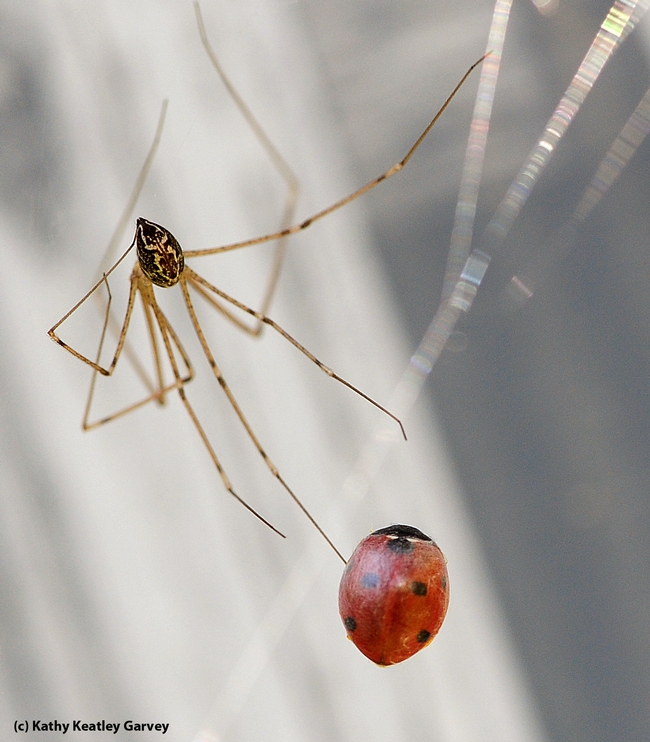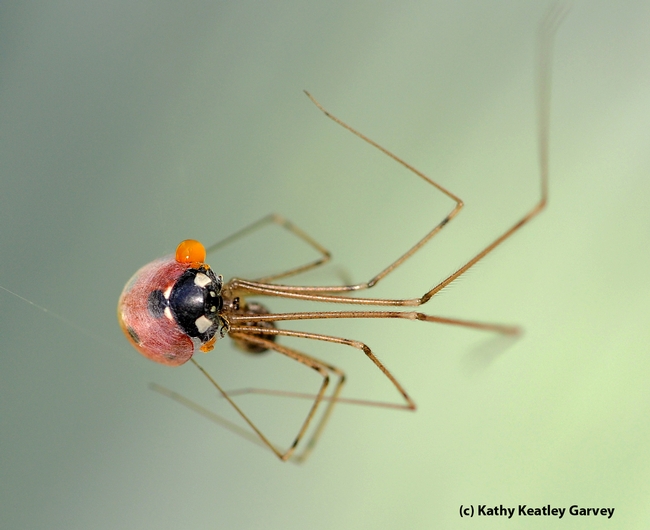The lady beetle, aka ladybug, was at the wrong place at the wrong time.
We don't know how she managed to get tangled in the cellar spider's web or why the cellar spider opted to have her for dinner instead waiting for a tasty honey bee, a nutritious leafcutter bee or a plump bumble bee.
Nevertheless, we came upon this predator-prey attack in our backyard. It was too late to save the ladybug.
Ordinarily, the ladybug's bright red coloration serves as a "warning" to predators. Plus, ladybugs are known to ooze a foul-tasting chemical that tastes so bad that predators leave them alone.
"The bright colors of many coccinellids discourage some potential predators from making a meal of them," according to Wikipedia. "This phenomenon is called aposematism and works because predators learn by experience to associate certain prey phenotypes with a bad taste. A further defense known as 'Reflex bleeding' exists in which an alkaloid toxin is exuded through the joints of the exoskeleton, triggered by mechanical stimulation (such as by predator attack) in both larval and adult beetles, deterring feeding."
So why the cellar spider's unusual menu choice? "The spider's 'taste buds' probably weren't very good," quipped a UC Davis scientist.
Attached Images:

